A constellation is a group of stars that form a recognizable pattern or shape in the night sky. It is a way for humans to organize and identify the countless stars that are scattered across the universe. Constellations have been used by different cultures for thousands of years as a means of navigation, storytelling, and religious symbolism.
Each constellation is named after the shape or object it resembles, such as Orion, Ursa Major, or Leo. However, it is important to note that the stars within a constellation are not physically connected or close to each other. They may appear close from the perspective of Earth, but in reality, they can be millions of light-years apart.
Constellations are often associated with mythological stories and legends, adding a sense of wonder and imagination to the night sky. They serve as a reminder of our connection to the cosmos and the vastness of the universe.

It is highly likely that there is not a single person who hasn’t gazed up at the night sky. It is truly captivating, with thousands of stars twinkling and radiating light: some are faintly visible, while others shine brightly against the dark backdrop. One can’t help but ponder that at this very moment, many others are also admiring these same twinkling stars. After all, they are situated so far from Earth that they can be observed from all corners of the world.
In ancient times, people often looked to the stars for guidance: they used them to find their way back home, determine the optimal time for planting crops, predict the weather for the following day, and even engage in fortune-telling.
Constellations are regions in the sky that are visually divided into sections for the convenience of astrologers and the average person. In ancient times, constellations were referred to as bright areas of stars that formed visual connections and created stellar images.
Fascinating Trivia
The Union of Astrologers from different countries has officially recognized 88 constellations. It is interesting to note that these constellations were adopted in 1930, although 48 of them have been known since the time of Ptolemy in the 2nd century AD.
The names were assigned because their appearance was closely linked to the appearance of real or fictional animal representatives (such as Big Bear, Lion, Dragon, etc.), famous characters from Greek mythology (like Andromeda, Perseus, etc.), and objects that clearly delineate the lines of connecting shining stars (such as Libra, Crown, Southern Cross, etc.).
There are only 58 known star clusters that have the brightest stars (alpha) with names.
In 13 star formations, the shining lights are named beta, while the rest are only designated by Greek alphabetical letters.
The largest star formation is Hydra, which covers an area of 1303 square degrees. The smallest of them is the Southern Cross, which spans 68 square degrees.
The Big Dipper, also known as the Great Bear, is one of the most recognizable constellations in the night sky. It has been a familiar sight to people since childhood, and it can be seen from various locations on Earth. The Big Dipper has a slightly smaller size compared to Hydra, and its position in the sky is defined at 1280 degrees.
The Great Bear

The Big Dipper is a well-known constellation in the northern celestial hemisphere. It consists of seven stars that form a distinctive shape in the sky. Two of the stars, Dubhe and Merak, are located on the outer edge of the constellation and point towards the North Star, Polaris. The most visually striking star in the constellation is Alioth, and the most famous is the double star system, Mizar. It is said that those who can clearly see and distinguish these two stars have excellent eyesight.
In addition to the stars, the Big Dipper is also home to two galaxies, M81 and M101, which are spiral in shape. These galaxies can be easily observed even with a basic telescope.
In the designated area of this picture, there exists another captivating celestial image known as the “Owl”. It earned its name due to its striking resemblance to the bird. It is easily observable using low-powered telescopic equipment.
The Galaxies of the Ursa Major Constellation

As mentioned previously, there are two galaxy systems within the constellation.
- M81 is an intriguing spiral galaxy of the Sb classification, with a magnitude of 6.9. In conjunction with it is M82, a system with an asymmetric configuration and, in comparison to its neighbor, the dimmest. Due to the strong gravity of Galaxy M81, it distorts its neighboring galaxy.
The Hubble space equipment enables thorough examination of 32 objects of a transient nature. Through the data obtained, it was possible to determine the distance to the Galaxy, which is 11 million light years.
- M101 – is an Sc-type galaxy that has a magnitude of 7.9 m. When observing it with small telescopes, you can easily distinguish its central region. However, when examining images taken by larger devices, it becomes apparent that the galaxy is not symmetrical. The nucleus is located farthest from the center of the disk. The distance to M101 has been determined to be approximately 24 million light-years with the help of Cepheids observed by the Hubble Telescope Facility.
Studies of the past
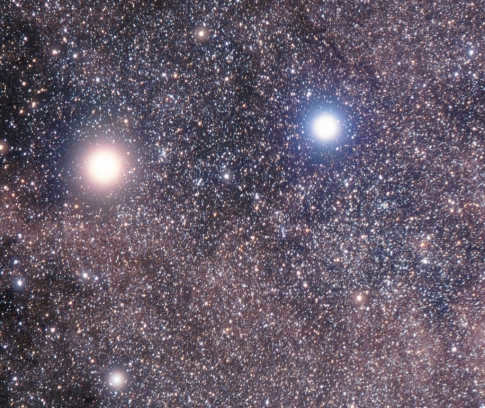
In 1603, an important historical event took place. Johann Bayer, a German astrologer, created a groundbreaking celestial atlas called Uranometria. This atlas aimed to accurately depict the positions of stars in the sky. Bayer initially assigned Greek letters to the stars, including the seven stars that make up the Big Dipper, based on their arrangement from west to east. He also established a system where the brightness of the stars corresponded to their Greek letter designation. The brightest star was labeled Alpha, followed by Beta, and so on. Bayer based his atlas on the years of research by the scientist Tycho Brahe.
The Big Dipper is a well-known celestial object that is recognized by people from childhood. It bears a striking resemblance to a dazzling dipper and can be easily observed from anywhere in the world throughout the year. Situated near the North Pole, it is part of the constellation Ursa Major and consists of seven bright stars. This stellar cluster is named after the nymph Callisto and is a prominent feature in the northern sky.
Observations
Observations
Observations
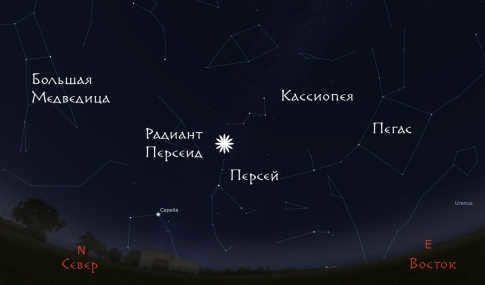
The Big Dipper is part of a group of celestial objects that are well-known and familiar to everyone. In fact, it is one of the first things people become acquainted with because of its unique shape.
On the eastern side of the Big Dipper, you can see the easily recognizable constellations of Perseus and Cassiopeia. The nearby Giraffe does not have a strong glow and can be difficult to use for orientation. The constellation Capricorn, along with its shining star Arcturus, appears to be chasing the Big Dipper and is located to the southeast.
The best time to see the Big Dipper is in the spring, specifically during the months of March and April. This star cluster can be observed from all regions of Russia.
Mythology
can be reimagined as
Legends and Folklore
.
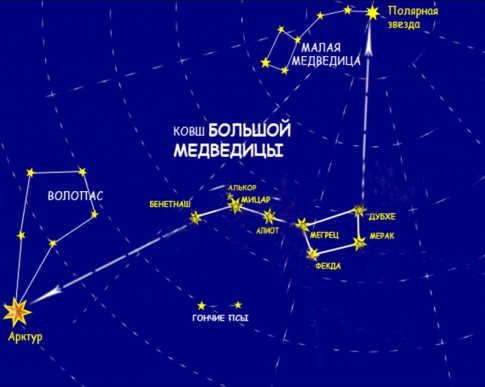
Hera, the wife of Zeus, was consumed by jealousy and, upon discovering her husband’s infidelity, unleashed a torrent of curses upon his mistress, transforming her into a massive and grotesque bear.
Shortly thereafter, Hera’s son Arcadus, while out hunting, stumbled upon the bear and unknowingly launched an arrow towards her, unaware that it was his own mother. In this critical moment, Zeus, fiercely protective of his beloved, managed to deflect the deadly arrow.
Following these events, Zeus transformed his son into a small bear cub and placed him alongside his mother in the cosmic expanse. Thus, they became immortalized as two constellations – Ursa Minor and Ursa Major. Not a day goes by without someone gazing upwards, searching the starry sky for these iconic figures.
Little Bear
In the vast wilderness, there exists a small creature known as Little Bear. This diminutive animal is a marvel to behold, with its soft fur and gentle eyes. Little Bear roams freely through the forests, always in search of adventure and new experiences.
Despite its small size, Little Bear possesses a brave and curious spirit. It fearlessly explores its surroundings, climbing trees and crossing babbling brooks with ease. Little Bear is a master of adaptation, blending seamlessly into its natural habitat.
Little Bear’s days are filled with joy and wonder. It frolics in the sunlight, chasing butterflies and playing hide-and-seek with its fellow woodland creatures. Little Bear’s playful nature brings a sense of happiness to all who encounter it.
At night, as the moon rises and casts a gentle glow over the land, Little Bear finds solace in the quiet beauty of the forest. It curls up in a cozy den, surrounded by the comforting sounds of nature, and drifts off into a peaceful slumber.
Little Bear is a reminder of the magic and wonder that can be found in the smallest of beings. Its presence in the world is a testament to the resilience and beauty of nature. Little Bear is a true treasure, a symbol of the delicate balance that exists in our natural world.
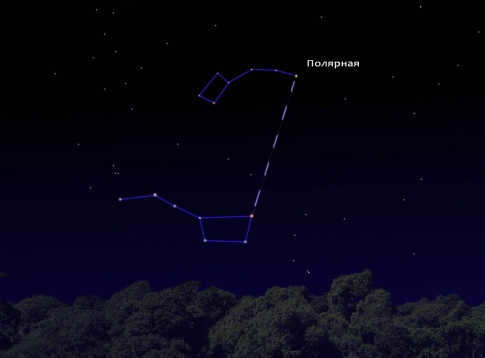
There are many different mythical stories and tales associated with the origin of this constellation. The Little Bear is a small constellation that can be found in the northern hemisphere. Since ancient times, it has been affectionately referred to as the “bear cub” by astrologers, dating back to the 2nd century by a Greek astronomer.
Typically, the Little Bear is depicted as a small bear cub with a long tail. Some believe that the length of the tail allows the baby bear to cling to the Earth’s pole.
The constellation is made up of seven bright stars that form the shape of a dipper, with Polaris at the end of the handle. This celestial figure is located approximately 430 light years away from the Earth.
This celestial body is widely recognized and highly regarded in numerous domains. It is renowned as a guiding star due to its brilliant luminosity and distinctive position, which assists lost sailors or hunters in finding their way back home.
The Bedouins have bestowed upon it the moniker “goat” and have adeptly employed it for nocturnal expeditions (with the second star for orientation being Canopus).
Locating the constellation in the celestial sphere is a relatively simple task. The neighboring constellations include Giraffe, Cepheus, and Dragon. However, if one wishes to find the Little Bear, it suffices to know the whereabouts of the Big Bear. Simply locate the two stars positioned at the outermost edge of the Big Bear, then count five distances between them, and voila! Polaris, also known as the North Star, will come into view. This star serves as the starting point of the Little Bear’s “handle”, which is considerably smaller in size compared to the Big Dipper. While not as luminous as its larger sibling, the Little Bear is still quite discernible within the vast expanse of the night sky. Furthermore, it can be observed year-round in the Northern Hemisphere.
The pole serves as the focal point of the celestial sphere, appearing motionless to an observer on Earth while all the stars appear to revolve around it. A prominent star in close proximity can serve as a reference point, and its position varies according to the time of day. Due to the Earth’s various movements, this point is in constant motion, although this change is virtually imperceptible on a human timescale. Currently, the star nearest to the pole is Polaris, which deviates from it by 40 angular minutes in calculations.
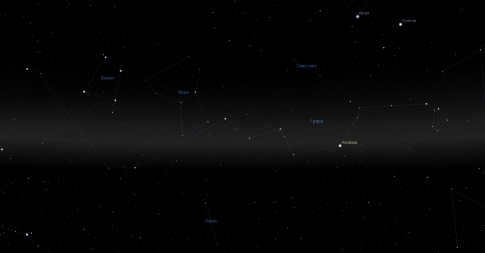
At present, astronomers have recorded numerous constellations, both large and small in size.
One of the constellations that falls into the category of large size is Hydra. It covers a significant portion of the sky, measuring approximately 1302.84 square degrees. Its name is derived from its size, as it represents a long and slender line that occupies a quarter of the entire celestial space. Hydra is primarily located in the southern region along the equatorial band. It is considered relatively faint due to its characteristic stellar composition. The constellation is home to only two prominent stars that are easily visible in the night sky, namely Alfard and Gamma Hydra.
Furthermore, there is also a scattered cosmic concentration known as M48 that is associated with Hydra.
The next constellation in terms of size is Virgo, which is comparable to Hydra in terms of its volume.
The Southern Cross is one of the smaller constellations in the night sky. It is located in the southern hemisphere and is often compared to the Big Dipper in the northern hemisphere. Its size is 68 0. According to ancient astronomers, it used to be part of the Centauri constellation, but in 1589 it was recognized as a separate constellation. Even with an untrained eye, you can see about 30 stars in the Southern Cross. There is also a faint nebula known as the Coal Sack, which is unique because it can create stars on its own.
Distinctive star formations
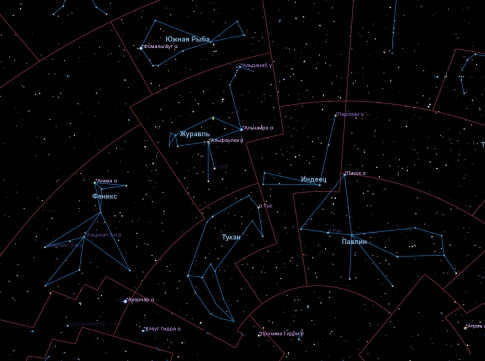
Each constellation in the celestial sky is distinct and has its own original name. Almost all constellations have a unique legend about their formation, and the cosmos is home to extraordinary celestial bodies. Among them are the cosmic representations of the Toucan and the Goldfish. The Goldfish constellation contains the massive Magellanic cloud, while the Toucan constellation is smaller in size. Both constellations are truly one-of-a-kind.
One important aspect is the co-rotation of the cloud clusters and our galactic system around a common axis, creating a unique triple star system. It should be emphasized that each member of this stellar trio is composed of a stellar cluster, a nebula, and other celestial objects.
Gemini
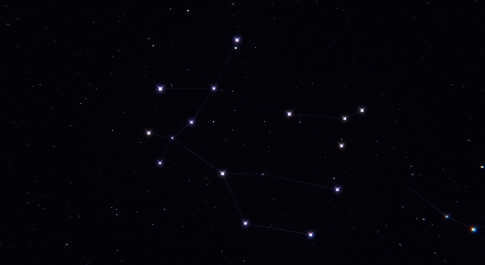
This constellation can be easily observed from any location in our country as it appears high above the horizon. It has a distinct shape that is clearly visible in the night sky. Located on the northeastern side of Orion, even those without any knowledge of astronomy can see two parallel lines representing the Gemini stars, while the Ascendant’s “parachute shell” can be seen on the northwestern side. The best time to observe this unique celestial figure is during the first two months of winter.
The Sun enters the domain of the Gemini constellation on the twenty-first day of June.
Gemini has been known to people since ancient times. On a clear night, you can see about 70 distinct figures in the sky, shimmering with intensity, which correspond to the constellations of stars. The two most prominent stars in Gemini are Castor and Pollux.
Castor is a highly complex system, consisting of 6 stars. It is located at a distance of 45 light years from the solar system.
Pollux, on the other hand, is the largest star in Gemini and emits a bright yellow light. It is much colder than Castor and is located 35 light years away from the Solar System. It is worth noting that its brightness is 35 times greater than that of the Sun.
These celestial bodies are widely acknowledged as the primary ones, being closely positioned in relation to one another, and since ancient times they have been regarded as kin, akin brothers, bonded by strong and selfless relationships.
In ancient Babylon, they were also personified as two inseparable brothers and were even given the epithet “shepherd and warrior”. It was firmly believed that they offered assistance to sailors, and in Sparta, it was believed that they protected and supported athletes.
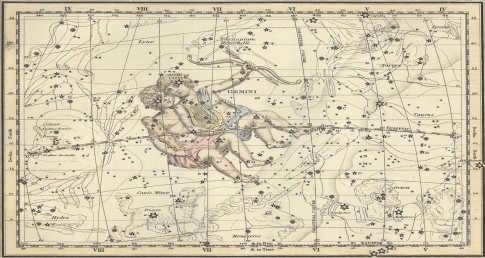
In ancient times, a captivating tale of unwavering brotherly friendship emerged. King Tindareus of Sparta was blessed with a stunning consort named Leda, whose beauty and grace were unparalleled. Even Zeus, the king of gods, could not resist her allure. However, Zeus was already married to Hera, the protector of marriages and women during childbirth. To conceal his infidelity, Zeus transformed into an elegant bird and flew to Leda. Their love for each other resulted in the birth of two children – a son named Pollux and a daughter named Helen, who famously sparked the Trojan War.
From her legal husband Tyndareus, Leda also bore two more children – a son named Castor and a daughter named Clytemnestra.
Pollux, the blood heir of Zeus, was bestowed with the gift of eternal life, while his half-brother Castor lived as an ordinary man. The two brothers, who had grown up together and gained fame, even embarked on the historic quest for the golden fleece. They were inseparable, always by each other’s side, so much so that they both chose to marry sisters. In order to achieve this, they resorted to stealing two daughters from the ruler Leucippus, but their actions did not go unpunished.
In the end, according to the parable, Castor met his demise at the hands of his own relative. Subsequently, Pollux, desiring to be eternally united with his dear sibling, convinced his father to strip him of immortality. Despite Zeus’ initial resistance, he eventually gave in to his son’s pleas, and the brothers took up residence in the subterranean realm. However, to ensure that the genuine friendship of the two brothers would forever be remembered by people, Zeus adorned them with radiant stars. In Greece, they were revered as advocates for humanity.
Picture of the cosmic Giant Canine
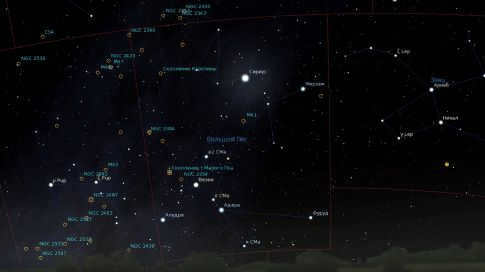
In winter time (December, January), it is best to observe the Northern Lights from various locations in Russia. However, it may not be visible all the time in the northern regions. To easily locate it, you can use the constellation Orion as a guide. By looking at the three stars on Orion’s belt, you can orient yourself towards the southeastern side where Sirius is located. Sirius is a very bright star, so it is not difficult to find. The Northern Lights can be seen clearly in the cold winter nights, and it is positioned close to the southern horizon. The constellation reaches its highest point in the sky at midnight, specifically during the last days of December and the first days of January. Interestingly, Sirius also aligns with the southern meridian at midnight in the new year.
Furthermore, it is widely believed that due to Sirius, the residents of the Northern regions were able to experience an extended period of warm weather in September, known as the Indian summer. The reason behind this phenomenon is quite straightforward – during this time, Sirius aligns with the Sun, resulting in its brilliant light illuminating the autumn days.
Sirius holds the distinction of being the brightest star in the sky. Not only that, but it also holds the seventh position in terms of its distance from the Sun, making it the closest celestial body to Earth.
This particular star has a rich history and is considered a part of the ancient constellation. As per a popular legend, Sirius is believed to be the loyal companion of Orion, known as the Dog.
Legends and Folklore
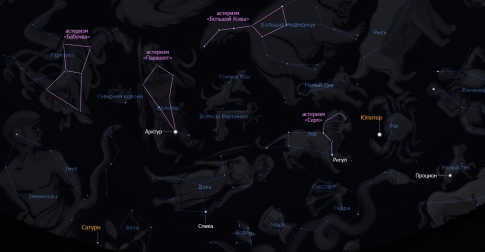
Icarus’ daughter, Erigona, embarked on a lengthy quest to locate her missing parent. One fateful day, she embarked on her search accompanied by her loyal canine companion, Myra. Myra led her to the mountainous regions where they discovered the lifeless body of her father. Overwhelmed with sorrow and hopelessness, the young girl took her own life beside her father’s remains.
In an act of divine intervention, the god of wine, Dionysus, transformed the trio – father, daughter, and dog – into constellations, adorning them in the celestial heavens. Ever since that moment, they have adorned the starry expanse, known to mankind as the Magpie, the Maiden, and the Big Dog.
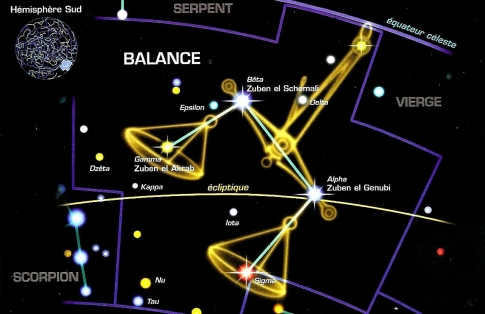
Libra is a star cluster that is not considered particularly interesting. It does not display vibrant auroras and it is quite challenging to make out a figure resembling Libra from the stars present. The only star visible to the naked eye is located at the bottom right, and it has a slightly greenish tint. It was first mentioned before the Common Era in the 1st century. A portion of another constellation, Scorpius, was borrowed to create Libra. The Romans named it Libra during the early years of the new era.
Because the name frequently changed, its appearance was formed much later than the other constellations. Initially, it was depicted as an altar, then it was seen as a lamp that Scorpio held in its large claws. Only after Scorpio released its grip did a new celestial shape emerge in the sky – Libra.
If Libra appeared in the northern regions, it signaled to the people that it was time for sowing. However, in Egypt, the appearance of Libra meant that it was harvest time.
In Greece, there was a goddess named Astrea who used scales to determine people’s destinies. According to one myth, the appearance of scales in the sky indicated that people were living in strict adherence to the laws.
Astrea’s parents were Zeus and Themis, the goddess of justice. At their command, she made fair judgments. She would blindfold herself and hold equal scales in her hands to ensure impartial decisions, help innocent victims, and harshly punish thieves and cheats. Zeus decided that his daughter’s instrument of justice should be placed in the starry sky as a symbol of honesty.
Common misconceptions about Libra

There are numerous myths and legends surrounding the constellation of Libra. One of these stories tells of the Roman emperor Augustus, who was known for his fairness and integrity. He always acted in accordance with the law and showed genuine concern for his people. In honor of his virtuous rule, his loyal subjects decided to immortalize his name by creating a constellation in the sky. They named it Libra, which means “scales” in Latin, symbolizing justice and balance. To make room for Libra, they had to slightly adjust the position of Scorpio. Thus, the constellation of Libra was born, serving as a constant reminder of Augustus’ legacy as a just and honorable ruler.
Occasionally, she would personally descend from her throne and wander the earth, carrying scales in her hands. These scales were enchanted and assessed the actions of individuals, distinguishing between what was fair and what was unlawful. If any transgressions were discovered, Themis would appear before the people with a sphere, through which she would pierce the hearts of those who were cruel, wicked, or deceitful.
As the story goes, Zeus encased the scales in a celestial design and positioned them in the boundless sky as a representation of justice.
Aquarius
Aquarius is the eleventh astrological sign in the zodiac. It is represented by the water bearer, which symbolizes the flow of wisdom and knowledge. People born under this sign are known for their independent and humanitarian nature. They are often described as progressive, innovative, and original thinkers.
Aquarians are intellectual and have a deep sense of curiosity. They are always eager to learn new things and explore different ideas. They have a unique ability to see the bigger picture and think outside the box. This makes them great problem solvers and inventors.
In relationships, Aquarians value their independence and freedom. They are not easily tied down and need a partner who understands and respects their need for space. They are loyal and caring, but can sometimes be emotionally distant.
In conclusion, Aquarius is a sign that is associated with intelligence, independence, and originality. People born under this sign are often seen as visionaries and are known for their humanitarian efforts.
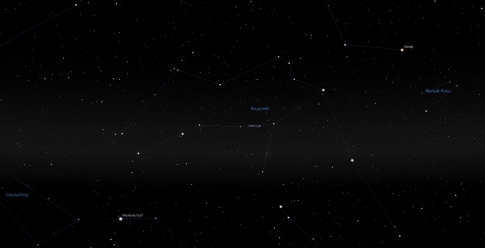
Located between Slaves and Capricorn, the constellation Aquarius is one of the oldest known constellations. It features a dazzling star called Sadalsuud, which is known as “the happiest of the lucky”.
Although Aquarius can be observed in certain regions of Russia, particularly in the central and southern parts, it can be challenging to locate among the multitude of stars in the sky. The best time to spot Aquarius is considered to be during the months of August and September. In ancient Greece and Arab cultures, the constellation had different names, but they all referenced its association with melting ice.
The name Aquarius is deeply connected to the birthplace of the Flood, which is the region encompassing the rivers Euphrates and Tigris. In the astrological records, these rivers are depicted as flowing out of a massive vessel held by the Aquarius constellation. This constellation is associated with the eleventh month of the year, often referred to as the curse of water. According to Sumerian beliefs, Aquarius is positioned at the very center of the celestial sea, symbolizing its role in predicting future rainfall. It has always been likened to a god who warns people of impending floods.
In ancient Egypt, Aquarius could only be observed in the celestial realm when the water level in the Nile reached its peak. It was believed that during this time, the water deity would turn a colossal vessel towards the Nile, causing an abundance of water to flow into the river.
Driver of a Chariot
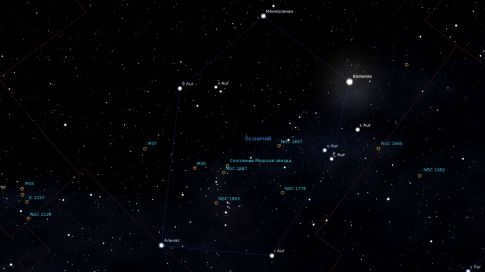
Located in close proximity to the polar region of the celestial sphere, this constellation has been known to humanity since ancient times. The star that shines the brightest within its boundaries is none other than Capella, which boasts a distinctive yellow hue. This particular characteristic has led to its identification as a Sun-like entity. In-depth investigations have revealed that this similarity is not only limited to its yellow coloration, but also extends to its temperature. Numerous stories and legends have been woven around this constellation, yet it remains a constant fixture in all atlases and maps, depicted as the Ascendant. In this depiction, a figure can be seen with a goat perched upon his shoulder, while he holds two additional goats in his hands. However, it is important to remember that in ancient times, this constellation was often perceived as a shepherd tending to a flock, consisting of a mother goat and her two offspring.
Regarding the goat that was positioned on his mighty shoulder, it was believed that it was the one providing milk to Zeus, and in return, when he became a god, he did not forget about her and placed her in the sky as a radiant and stunning star.
Every constellation holds its unique origin story, along with a captivating and splendid myth.
An artist’s depiction of the Big Dipper, a well-known constellation in the northern hemisphere.
A constellation refers to “a collection of nearby stars in the celestial sphere that form a specific recognizable shape and are given a specific name”; it is also defined as “a defined area of the sky that encompasses that group of stars.”
Various cultures created patterns by connecting certain stars with imaginary lines. These patterns were associated with myths and were used for navigation and orientation purposes by sailors and astronomers.
Even though the stars in constellations seem to be clustered together when we look at them in the night sky, they are actually quite distant from each other. This fact becomes apparent when we embark on a virtual journey to the Orion constellation (the distances in this animation have been accurately depicted).
Unless stated otherwise, the term constellation in this context refers to contemporary constellations. Presently, the International Astronomical Union (IAU) divides the celestial sphere into 88 constellations with precise boundaries, ensuring that any given point in the sky is associated with one and only one constellation. These 88 constellations are further classified into two groups, 44 for each hemisphere of the Earth, the northern (north) and southern (south) constellations. The boreal constellations, which trace back to Mesopotamian and Mediterranean civilizations, are the oldest. They were inherited from the Greeks and later the Romans. On the other hand, the southern constellations were designated by western astronomers until the 17th century.
Summary
- 1 Western and modern constellations
- 1.1 History
- 1.1.1 First to first century: Ovid’s constellations
- 1.1.2 2nd century: Ptolemy’s constellations
- 1.1.3 Seventeenth century in the southern hemisphere
- 1.1.4 Twentieth century: constellations of the MAI
- 3.1 Zodiac
- 4.1 Ancient sources
- 4.2 Bibliography
- 4.3 Articles on the subject
- 4.4 External links
- 5.1 Notes
- 5.2 References
Western and modern constellations
Historical
The constellations have their origins in Mesopotamia.
Around 4000 BC, constellations such as Leo, Taurus, and Scorpio existed in Mesopotamia, although they may not have been known by these names.
One of the oldest depictions of constellations can be found on a Greek vase from 625 BC.
Many of the modern constellations are derived from the work of Greek astronomers. In fact, Homer mentions the constellation of Orion in the Odyssey, which dates back to the 9th century BC.
In the 3rd to 2nd century BC, Aratus documented the names of most of the constellations, which were later adopted by Ptolemy.
- Ovid, Fastes III, 407-414: Ampelos, the lover of Dionysus, is transformed into a constellation after a tragic accident.
- In Ovid’s (vol. 7) work, the Vine is depicted on one of the wings of the Virgin. It ascends on the 3rd of the nuns, which is also the day that Bouvier retires to bed.
2nd century: Ptolemy’s constellations

In the 2nd century, Ptolemy categorized 1,022 stars into forty-eight constellations in his book Almagesta. This classification system served as the foundation for Western astronomers until the Middle Ages. However, it should be noted that Ptolemy’s list only included stars visible from Alexandria, where his observations were conducted.
In addition to the twelve Zodiac constellations (Aries, Taurus, Gemini, Cancer, Leo, Virgo, Libra, Scorpio, Sagittarius, Capricorn, Aquarius, and Pisces), Ptolemy identified thirty-six other constellations:
- Andromeda (the princess)
- Eagle
- Altar
- Argo ship, which is further divided into:
- Hull
- Stern
- Sail
- Eridanus (the river)
- Arrow
- Big Dog
- Big Bear
- Hercules (mighty man);
- Hydra ;
- Hare ;
- Wolf ;
- lyre ;
- Serpentor (snake, carrier of the Serpent );
- Orion (hunter);
- Pegasus (flying horse);
- Perseus (hero);
- Konek ;
- small dog ;
- Little Bear ;
- Southern Fish ;
- Serpent (now divided into two parts, the tail and head of the snake, due to the keeping of the Serpentine );
- Triangle .
The forty-eight constellations documented by Ptolemy in his Almagest, would be utilized in the Western world for more than 1,000 years.
The constellation Antinoea , created during the reign of the Roman Emperor Hadrian from a portion of the Eagle constellation (Ptolemy), would be removed by the UAI in 1930.
Almagest Ptolemy was acquired by Arab astronomers who expanded on his observations by including a few constellations that are no longer in use today, as well as extending some (such as Eridanus) to include stars that can be seen from latitudes further south than in Alexandria.
In Europe, the Almagest was lost. It wasn’t until the end of the Middle Ages that astronomers had access to Arabic translations of the work in Latin, as well as a collection of observations made by Arab astronomers.
South of the Equator in the 17th Century
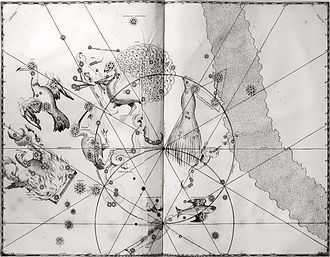
Ever since the 17th century, when European sailors ventured into the southern hemisphere, they stumbled upon previously unknown stars that did not belong to any recognized constellation.
In 1603, a German astronomer named Johann Bayer released the Uranometria, which was the very first comprehensive atlas of the celestial sphere. It included not only the constellations documented by Ptolemy, but also twelve new constellations that were visible in the southern hemisphere. These constellations were likely charted by Dutch explorers Pieter Dirkszoon Keyser and Frederick de Hautman, who generously shared their discoveries with Bayer:
These newly discovered constellations, adorned with exotic names, were the first to grace the pristine celestial planisphere and became so popular that they are still recognized and utilized today.
They are also proof of the changing perception of constellations. In ancient Greece, the sky was divided into two parts: the constellations and the spaces in between, which were believed to not belong to any specific constellation. Johann Bayer, when creating a map of the starry sky for each constellation, began to associate any point in the sky with that specific constellation.
Following the publication of Uranometria, European astronomers attempted to introduce their own creations, but were not as successful as Bayer.
In 1624, German astronomer Jakob Bartsch discovered five new constellations. The constellations The Unicorn, The Giraffe, and The Southern Cross have remained, while those of Tiger and Jordan were not preserved.
Around the same time, Tycho Brahe established the asterism Berenice’s Hair as a constellation.
In 1643, Anton de Reita introduces the character of Jesus positioned between Leo and Hydra, while The Fly is located near Aries and is renamed Fleur de lys during the reign of Louis XIV. The courtiers are fascinated by this game: in France, Augustin Royer utilizes a cluster of stars he refers to as the Sceptre located between Andromeda, Cepheus, and Pegasus. In Prussia, the royal astronomer Gottfried Kirch creates a second Sceptre under Eridanus to give it a dual presence. However, these claims to prestige are not universally accepted by the community of astronomers.
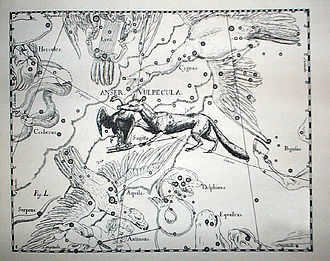
Around 1690, Johannes Hevelius, who served as the mayor of Danzig, put forward various constellations:
- Hunting Dogs;
- Sobieski’s shield;
- Lizard (in place of Augustine ROYER in the Scepter);
- Lynx (according to Hevelius, its star is so faint that one needs the eyes of a lynx to see them);
- Lionpaw;
- Little Fox (originally known as Goose Fox, described as a fox carrying a goose in its mouth);
- Sextant.
These names, not tied to any specific ruler, became more popular and have endured to the present day.
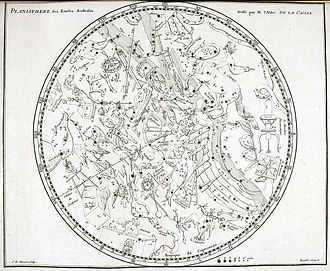
In his publication called “Coelum australe stelliferum” (1763), Nicolas-Louis de Lacaille introduces a number of fresh constellations to occupy the empty parts of the sky with significance:
- Compass;
- Burin;
- Compass;
- Furnace;
- Clock;
- Pneumatic machine;
- Microscope;
- Fly;
- Octant;
- Painter (originally referred to as Painter easel);
- Rule;
- Reticle;
- Sculptor;
- Table (originally a table mountains from which observations were made);
- Telescope.
The chosen names reflect the prevailing ideas of the era, which were more focused on science and technology rather than adventure and mythology. Additionally, La Cai divided the ship Argo into three smaller constellations for easier navigation. During the same time period (late 18th century), other constellations were also featured on maps but were later disregarded, such as Lalande’s Aerostat or the Quadrant, which actually gave its name to the Quadrantid meteor shower. As a result, a total of forty-four temporary constellations were briefly depicted on maps.
20th Century: The IAI’s Constellations
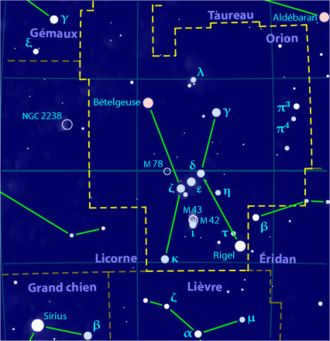
During the 1920s, the International Astronomical Union made the decision to bring organization to the constellations and establish clear boundaries for each one. In 1930, Eugène Delporte created the official constellation atlas, which divides the sky based on the equatorial coordinate system. This system uses lines of right ascension and declination to divide the sky. The boundaries of the constellations are defined using B1875.0 epoch coordinates. However, due to the precession of the equinoxes, these boundaries are no longer perfectly horizontal and vertical on modern star maps. (For more information on motion and position, see # Motion and position).
Listing
Chinese constellations
Similar to Greek astronomers, Chinese astronomers organized specific stars into constellations. At first, they focused on the ecliptic zone, which is similar to the Western zodiac, and then expanded their observations across the entire sky. The group of twenty-eight constellations, also known as asterisms, located in the ecliptic zone are referred to as lunar houses. These constellations are further divided into four zones, each containing seven asterisms. Each of these zones corresponds to one of the four animals in Chinese symbolism – the Azure Dragon in the east, the Cinnabar Bird in the south, the Black Tortoise in the north, and the White Tiger in the west. Unlike the zodiac, these asterisms vary greatly in size, and their origins remain a mystery.
Afterwards, asterisms were assigned to the entire visible celestial sphere from the Chinese perspective (meaning anything with a declination greater than approximately -55 degrees). In contrast to the Western approach of populating the sky with mythical characters and creatures, the Chinese chose to represent the heavens mirroring their own society. This was achieved by depicting various palaces (Ziwei, Taiwei) that housed different classes of the court and Chinese society. Additionally, some pictorial elements were incorporated into the asterisms, such as Xie which symbolizes a restroom, and Tianshi which represents excrement for agricultural purposes.
The lunar houses have a long history. Their apparent dominance in the Chinese sky may be attributed to their use in establishing a calendar, as the position of the Sun in these constellations helps determine the cycle of seasons. The other constellations were created around the end of the 3rd century BC. They are described in three astronomical treatises: Shi Shi, Gan Shi, and Wuxian Shi, which were likely written in that order. The asterisms in Shi Shi encompass most of the brightest stars, unlike those in the other treatises, which were introduced shortly after the completion of the previous ones and filled in areas that were still devoid of asterisms. Wuxian Shi frequently references Gan Shi, while the reverse is not true, indicating the latter’s seniority.
The precise makeup of these asterisms has yet to be definitively determined. Typically, astronomical treatises only specify the location of one of the stars in the asterisms, known as the reference star, and often with some degree of inaccuracy. The remaining stars in the asterism are currently determined using star charts from the Chinese tradition, which provide an approximate level of accuracy and rarely differentiate between the varying apparent magnitudes of the constituent stars.
China’s skies contain a total of approximately 280 asterisms, which is significantly more than what can be found in Western constellations. Some of these asterisms are quite expansive, like the ones that depict the walls of different palaces (e.g., Tianshi). On the other hand, some asterisms are much smaller, consisting of just a single star (such as Dajiao, which corresponds to α Bootis / Arcturus, or Tianguan, which corresponds to ζ Tauri). With the exception of the single star asterisms, the stars in these asterisms do not have individual names. However, there are a few very large asterisms like Tianshi that are named after the provinces of the Chinese Empire during the Han Dynasty, when these asterisms were created.
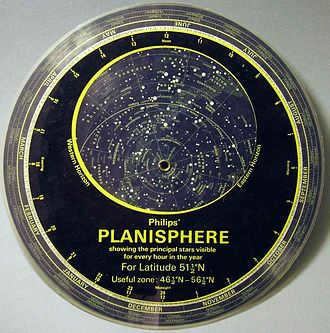
The movement of the Earth’s rotation causes the constellations to shift their position in relation to the north and south poles of the world, which are aligned with the Earth’s axis of rotation. In the northern hemisphere, the pole is located at the position of Polaris, while in the southern hemisphere it is aligned with σ Octantis. This is why on celestial maps of the northern hemisphere, such as the interactive sky map, the North Star is seen at the center.
Depending on the observer’s latitude, the time of day, and the season, constellations will rise on the eastern horizon and set on the western horizon, much like the movement of the sun, moon, and planets. Constellations that never dip below the horizon are known as near-polar constellations. The closer an observer is to the poles, the more opportunities they have to view the circumpolar constellations.
Therefore, for the majority of observers in the northern hemisphere, constellations like the Ursa Minor and Ursa Major, Queen Cassiopeia, King Cepheus, and the Serpent are always visible in the sky. On the other hand, there are other constellations that remain hidden during the day and can only be seen in specific seasons. For example, Orion can be seen in the winter, Lyra in the summer, Leo in the spring, and Andromeda in the fall.
When observed from Earth, the positions of the constellations gradually change over time due to the phenomenon known as the precession of the equinoxes.
Zodiac
The constellations of the Zodiac can be found in a celestial band known as the ecliptic, which encompasses the orbits of the Sun and planets. They are typically the oldest due to their significance in locating and observing the movements of numerous stars.
The twelve constellations of the zodiac include Aries, Taurus, Gemini, Cancer, Leo, Virgo, Libra, Scorpio, Sagittarius, Capricorn, Aquarius, and Pisces, completing the cycle. Some include Serpentarius (Serpentarius) between Scorpio and Sagittarius and consider it the thirteenth zodiac sign. Astronomically speaking, it is true that a small portion of the serpent lies between Scorpio and Sagittarius.
Appendices
Ancient sources
List of utilized literature
Articles relating to the topic
External references
- Unaccounted constellations
- Constellations of Fall, Winter, Spring, Summer, on Astronoo
- History of celestial cartography
- Stellarium is an exceptional (free) program that, after a few configurations, enables us to visualize all the official constellations (with celestial objects). We can also display various lines, including the ecliptic (zodiac) line.
Notes and references
Notes
Used literature
- ↑ Small Illustrated Larousse, Paris, Larousse, 2007., 1811 p. (ISBN978-2-03-582502-5)
- ↑ (in) StarChild Team “StarChild Question of the Month for May 1999” at http://starchild.gsfc.nasa.gov, NASA, May 1999.
- ↑ (in) Asterism, Encyclopedia Britannica (read online)
- ↑ (in) John Tate, “Asterism” at http://www.universetoday.com, December 4, 2009.
- ↑ John Bruss. (ru) Constellations and asterisms on YouTube, May 24, 2012.
- ↑ See about these distances in this image [1].
- ↑ (in) “Constellations” at http://www.iau.org, International Astronomical Union(accessed September 4, 2014)
- ↑ (in) The names of constellations can be found in Willy Ley’s article “Constellation Names” in the December 1963 issue of Galaxy, on pages 91-93. You can read it online.
- ↑ (in) Another article by Willy Ley on constellation names can be found in the December 1963 issue of Galactica, on page 94. You can read it online.
- ↑ The scientific delineation of constellations, including tables and maps, was done by Eugène Delporte. His work was published in 1930 by Cambridge University Press. It includes 41 pages. You can find an online presentation of it.
- ↑ You can access the book “Almagest” at http://www.cpt.univ-mrs.fr/~rovelli/Almagest.pdf
- ↑ For a table of constellations, you can visit http://remacle.org/bloodwolf/erudits/ptolemee/table.htm
Throughout history, humanity has always gazed upwards at the vast expanse of the sky. For centuries, the stars have served as navigational aids for sailors, and their importance remains unchanged in the present day. A constellation refers to a collection of celestial bodies that are identified by a common name, despite being located at varying distances from one another. In ancient times, the names of constellations often derived from the patterns formed by these celestial bodies. This article will delve into further detail regarding this fascinating topic.
General information
There are a total of eighty-eight constellations that have been officially registered. Out of these, only forty-seven have been known to humans since ancient times. We owe a debt of gratitude to the astronomer Claudius Ptolemy, who organized the known constellations of the night sky in his treatise “Almagest”. The remaining constellations emerged as humans started to explore the world more intensively, travel, and document their findings. As a result, new groups of celestial objects appeared in the sky.
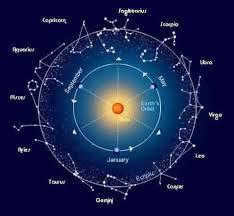
There is a wide variety of constellations in the night sky, each with its own unique name (some of which will be showcased in this article). Many constellations have multiple names, often associated with ancient legends. For instance, the origin of the Big and Little Bears in the sky is accompanied by an intriguing myth. During the time when the gods ruled over the world, Zeus reigned supreme. He became infatuated with the beautiful nymph Callisto and made her his wife. To protect her from the jealous and dangerous Hera, Zeus transformed her into a bear and placed her in the heavens. This is how the constellation Ursa Major, also known as the Big Dipper, came to exist. Callisto’s faithful dog became the constellation Ursa Minor, or the Little Bear.
Names of the Zodiacal Constellations in the Solar System
The zodiacal constellations are the most famous constellations known to humanity. These constellations have been recognized since ancient times as the ones that intersect the path of our Sun during its annual journey, known as the ecliptic. The ecliptic is a broad band of celestial space that is divided into twelve segments.
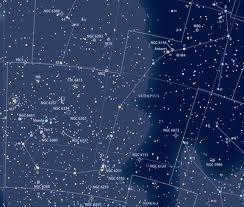
- Aries;
- Taurus;
- Gemini;
- Cancer;
- Leo;
- Virgo;
- Capricorn;
- Aquarius;
- Pisces;
- Libra;
- Scorpio;
- Sagittarius;
- Serpentor.
As you can observe, unlike the Zodiac signs, there is an additional constellation present – the thirteenth. This is due to the fact that the configuration of celestial bodies changes over time. The Zodiac signs were established a considerable time ago, when the arrangement of the sky was somewhat dissimilar. Currently, the positions of the stars have experienced some alterations. Consequently, another constellation emerged along the path of the Sun – the Serpentine. It is positioned right after Scorpio in the series.
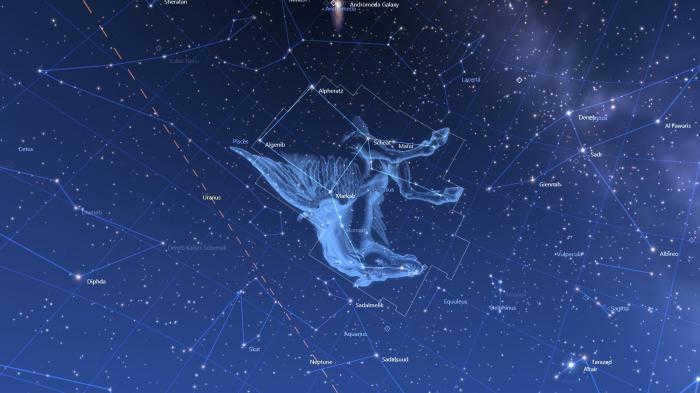
The vernal equinox marks the beginning of the sun’s journey through the sky. During this time, the sun moves along the celestial equator, resulting in equal amounts of day and night (the opposite occurs during autumn).
Constellations of the Big and Little Dipper
One of the most renowned constellations in our night sky is the Big Dipper and its accompanying Little Dipper. However, what led to the rise in significance of a constellation that may not be the most extravagant? The answer lies in the presence of Polaris, also known as the North Star, within the cluster of celestial bodies in Ursa Minor. For countless generations, Polaris has served as a guiding light for sailors and continues to do so today.
Its unwavering position is what makes it so practical. Situated near the North Pole, all other stars in the sky appear to revolve around it. This remarkable trait was observed by our ancestors, giving rise to a variety of names for Polaris in different cultures (such as the Golden Stake, Heavenly Stake, and North Star).
Naturally, there are other notable celestial objects within this constellation, and their names are provided below:
If we discuss the Big Dipper, it more closely resembles a ladle in its shape compared to its smaller counterpart. Based on calculations, there are approximately one hundred and twenty-five stars in the constellation that can be seen with the naked eye. However, there are seven main stars:
- Dubhe (Alpha);
- Merak (Beta);
- Fekda (Gamma);
- Megretz (Delta);
- Aliot (Epsilon);
- Mitzar (Zeta);
- Benetnash (Eta).
The Big Dipper contains nebulae and galaxies, just like many other constellations. The names of these include:
- The spiral galaxy M81;
- The Owl Nebula;
- The Chain Wheel spiral galaxy;
- The M109 junction spiral galaxy.
Undoubtedly, our celestial sphere boasts a plethora of extraordinary constellations (images and designations of a few are showcased in the piece). Nevertheless, apart from these, there exist a myriad of awe-inspiring stars. Take, for instance, the star Sirius, which resides in the ancient constellation Canis Major, known to our forefathers since time immemorial. Countless legends and myths are intertwined with this celestial body. The ancient Egyptians diligently monitored the movements of this star, with some scholars even postulating that the apexes of the African pyramids align with its trajectory.
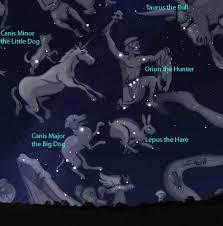
At present, Sirius is one of the nearest stars to our planet. Its characteristics are twice the size of the Sun’s. It is believed that if Sirius were in the position of our star, life on Earth as we know it would hardly be feasible. The intense heat would cause all the oceans on the planet’s surface to evaporate.
Alpha Centauri is a rather fascinating star that can be observed in the sky of Antarctica. It is the closest star similar to our Sun. It consists of three stars, and two of them might potentially have planets similar to Earth. However, the third star, Proxima Centauri, is unlikely to possess such planets due to its small size and coldness, according to scientific calculations.
It should be pointed out that at present there exist established major and minor constellations. Pictures and designations of them will be provided below. One of the largest can be confidently referred to as Hydra. This constellation covers an expanse of 1302.84 square degrees in the celestial sphere. Evidently, this is the reason it was given such a name, as it bears a strong resemblance to a slender and elongated band that occupies a quarter of the stellar expanse. The primary location of Hydra is situated to the south of the celestial equator line.

When it comes to its stellar makeup, Hydra is quite faint. It consists of only two notable objects that stand out prominently in the sky – these are Alfard and Gamma Hydra. Additionally, there is a scattered cluster known as M48. Virgo, which is slightly smaller in size, is the second largest constellation. Hence, the cosmic community representative described below is truly diminutive.
Therefore, the Southern Cross, situated in the Southern Hemisphere, stands as the tiniest constellation in the celestial sphere. Analogous to the Big Dipper in the Northern Hemisphere, it covers an area of sixty-eight square degrees. Ancient astronomical records indicate that it was once an integral part of Centauri until it was officially recognized as an independent constellation in 1589. Approximately thirty stars are observable within the Southern Cross, even without the aid of a telescope.

Furthermore, the star pattern presents a unique feature known as the Coal Sack, which is a dark nebula. What makes it captivating is its ability to undergo star formation processes. Another extraordinary celestial formation within this constellation is the NGC 4755, which is a diffuse cluster of celestial bodies.
It is worth mentioning that the constellations in the sky have different names and vary depending on the time of year. For instance, during the summer, the following constellations are easily visible:
In contrast, the winter sky is adorned with different constellations, such as:
As for the fall sky, it showcases the following constellations:
Lastly, the spring sky is illuminated by the following constellations:
Constellations in the northern hemisphere
The celestial objects visible in each hemisphere of the Earth differ in their names and the constellations they belong to. Let’s explore the constellations that are characteristic of the northern hemisphere:
- Andromeda
- Ascendant
- Gemini
- Veronica’s hair
- Giraffe
- Cassiopeia
- Northern Crown, and others
Unique Southern Hemisphere Constellations
The constellations in the southern hemisphere have their own unique names for the stars they contain. Here are a few examples:
- Raven;
- Sacrifice;
- Peacock;
- Octanthus;
- Cup;
- Phoenix;
- Centaurus;
- Chameleon and more.
The most fascinating constellations
Undoubtedly, all the constellations in the celestial sphere and their designated names (see photo below) are remarkably distinctive. Many possess their own intriguing backstory, enchanting myth, or extraordinary elements. Among these are the Goldfish and Toucan constellations, which stand out for their inclusion of the Large Magellanic Cloud and Small Magellanic Cloud, respectively. These two celestial objects are truly awe-inspiring.

The Large Cloud resembles a Segner wheel in appearance, while the Small Cloud looks like a punching bag. These cloud formations take up a significant portion of the sky and bear a resemblance to the Milky Way, although they are much smaller in size. It’s as if they were once part of the Milky Way but became separated. Interestingly, the composition of the Clouds is similar to that of our galaxy, making them the nearest star systems to us.
What’s even more surprising is that our galaxy and the Clouds can orbit around a common center of gravity, creating a triple star system. Each of these entities possesses its own star clusters, nebulae, and other celestial objects.
Conclusion
As can be observed, the constellations possess a remarkable and diverse array of names. Each constellation contains its own fascinating celestial objects, namely stars. Naturally, there remains an abundance of cosmic mysteries yet to be unveiled, but optimism prevails for the future. The human intellect is inherently inquisitive, and unless we face a cataclysmic event, the potential for conquering and exploring space is within reach. With the construction of advanced spacecraft and cutting-edge technology, our understanding will extend far beyond merely identifying constellations; we will unlock a myriad of knowledge.
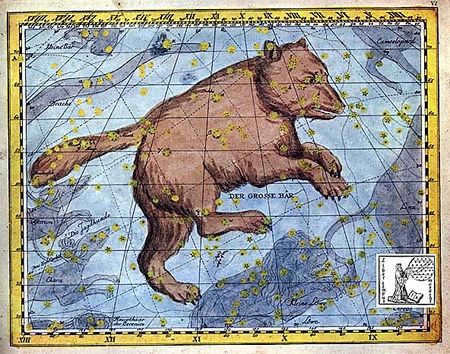
Constellations are divisions on the celestial sphere that are used for easy navigation in the night sky (there are a total of 88 constellations). In ancient times, constellations were known as recognizable shapes formed by bright stars.
Constellations are groups of stars that are arbitrarily grouped together based on how they appear from Earth, regardless of their actual distances or any connections between them. While they are remnants of ancient times, constellations now serve as a helpful tool for familiarizing oneself with the night sky and for providing approximate locations of certain regions in the sky, as well as for identifying bright stars.
Constellations with the greatest antiquity
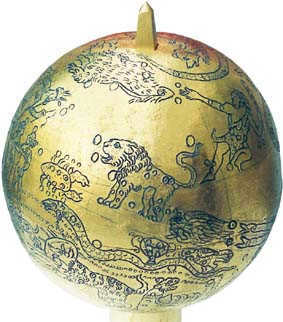
The Bible makes reference to the constellations As, Kesil, and Hima, which are equivalent to the well-known and easily seen modern constellations Big Dipper, Orion, and the Pleiades cluster. However, it does not mention the zodiac, which held great importance in Mesopotamian cultures. The idea of the zodiac as the visible path of the Sun through the constellations represents a significant advancement in the field of astronomy. Alongside the zodiac, the people of Mesopotamia identified constellations from other stars, filling the night sky with a variety of living creatures.
The ancient lunar zodiac, known as the “lunar houses,” was the oldest system of constellations. The moon held great importance in the astronomy of ancient civilizations, as it was used for timekeeping. Observers of the night sky noticed the moon’s consistent positions among the stars and created 27-28 small constellations to represent its stellar journey over the course of 27 1/3 days. These constellations, such as the Chinese tse (sien), Hindu nackshatra, and Arabic mazanil al kamr, were relatively small, consisting of only a few stars. The tse constellations were located along the equator, starting with the stars α and ζ of Virgo. One of the nackshatra constellations corresponded to the bright α star of Lyra, while the other 27 were positioned along the ecliptic. The Pleiades group was the first in this sequence. The Arabian “houses of the Moon” were mentioned in ancient songs but were derived from the Hindu nackshatra system. In the past, there was doubt about the existence of the lunar zodiac among the Chaldeans (ancient Babylonians). However, evidence of the “houses of the moon” has been discovered in cuneiform writing tablets. The Chaldeans had a separate system of “basic” stars to track the positions of the Moon and planets, with 28 such stars found near the ecliptic. Just as the moon’s rotation influenced the formation of lunar houses, its synodic cycle (29 1/2 days) resulted in 12 lunar months, and the stars that marked consecutive full moons formed the 12 constellations of the solar zodiac. The Chaldeans used a luni-solar calendar, which included additional months to maintain consistency between lunar months and the solar year, ensuring that the same constellations remained visible at roughly the same time each year. A fragment of a planisphere, housed in the British Museum, showcases the alignment of month names with specific stars.
Horoscope
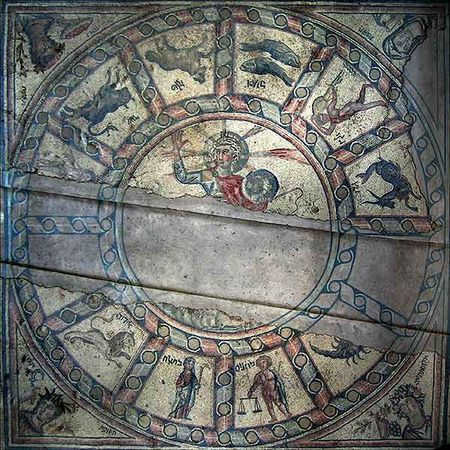
The constellations of the zodiac have ancient names that are believed to have originated from stories passed down through generations, possibly dating back to the time of Noah. These names are often referred to as the “Bible in the stars”. In some interpretations, the first constellation of the zodiac symbolizes the creation of the world, while the following ten represent the pre-flood patriarchs.
The story of the first man being created under the constellation of Taurus was well-known among ancient civilizations.
The third month, known as the “preparation of bricks”, is dedicated to the ancient tale of fratricide that is found in many cultures and is associated with the establishment of the first city. The constellation representing this month is Gemini, which is symbolized by two pillars made of bricks.
The constellation Cancer was associated with the sun’s backward movement.
The constellation Leo is connected to the myth of “fire, giving birth to fire”, which is symbolic of the summer heat. Some researchers believe that this represents the coming of the Messiah.
The constellation Virgo was associated with the Babylonian belief of the goddess Ishtar descending into hell. For Christians, it served as a hint towards the Immaculate Conception of Christ or the Church.
The seventh and eighth months were associated with the constellation Scorpio, depicted as two scorpions in ancient monuments, dating back to the 2nd century BC. However, during that time, its “claws” were transformed into a separate constellation known as Libra, which symbolizes the balance between day and night.
The ninth constellation, Sagittarius, is represented by the figure of the 8th patriarch Methuselah, also known as Méthoushelah – “the man with the arrow”.
The month of Capricorn, which falls in December and January, is linked to the story of a cave where the Sun God is said to have been born, with a nurse attending to him.
Pisces, the final zodiacal constellation, represents the end of the Flood, which was caused by the preceding constellation – Aquarius, known as the “curse of rain”. It also symbolizes the revival of agricultural activities after the Flood, signifying new life.
The ancient Egyptians had little knowledge of the planets and moon, so they did not have a need for zodiacal constellations. The zodiacs that were found in Egypt actually belong to the time of Roman rule and are a remnant of the late Greek influence. However, the Egyptians did have their own constellations, which were eventually forgotten during the development of the Alexandrian school. Some of these Egyptian constellations merged with the Greek ones. In burial grounds from the 20th dynasty (1200 B.C.), there are images of constellations such as the Goose, Hippopotamus, Two Stars, Set (Sirius), and more. The Hindus adopted the solar zodiac from the Greeks, but their constellation names are distorted versions of Greek words. The Chinese solar zodiac, known as “The Yellow Road of the Sun”, has a common origin with the Chaldean zodiac, but it includes different “animals” such as the Rat, Bull, Tiger, Hare, Dragon, Snake, Horse, Baran, Monkey, Rooster, Dog, and Pig. Over time, the Chinese zodiac lost its astronomical significance and became more associated with astrology. The animal names began to represent successive years.
Systemization
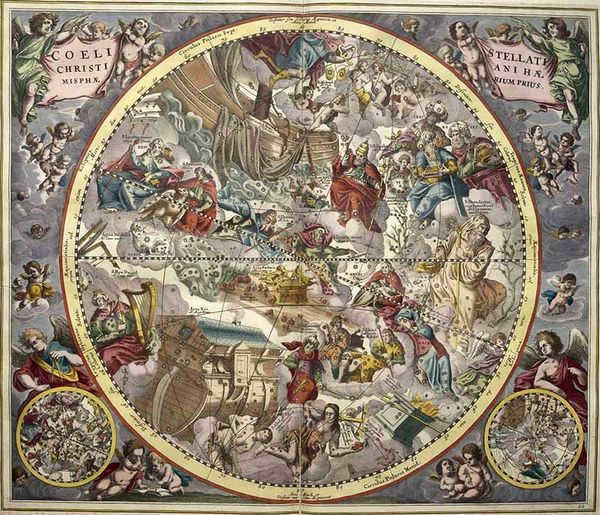
In his “Μεγάλη σύνταξις” (Almagest), Ptolemy established the 48 ancient constellations, which are now known as the Ptolemaic constellations. The constellations of the zodiac include Aries, Taurus, Gemini, Cancer, Leo, Virgo, Libra, Scorpio, Sagittarius, Capricorn, Aquarius, and Pisces. In the northern hemisphere, we have the Big Dipper, the Little Dipper, the Dragon, Cepheus, Cassiopeia, Andromeda, Perseus, the Magus, the North Wreath, Hercules, Lyra, the Swan, the Ascendant, the Serpent, the Snake, the Arrow, the Eagle, the Dolphin, the Stallion, Pegasus, and the Triangle. In the southern hemisphere, we have the Whale, Orion, the River, the Hare, the Great and Small Dogs, the Ship, Hydra, the Cup, the Raven, Centaurus, the Wolf, the Sacrifice, the Southern Crown, and the Southern Fish.
The ancient depictions of constellations have been lost to history, with only distorted fragments surviving in Arabic manuscripts. In the early 16th century, the renowned artist Albrecht Durer illustrated constellations based on their descriptions by Ptolemy. This collection of illustrations, known as an atlas, was published in Nuremberg in 1515. While no known copies of this original atlas exist today (although the Pulkovo Library does have a copy from 1537 without the drawings), Durer’s modified drawings were later included in star atlases by Bayer (1603) and Flamsteed (1729). Subsequent versions of the constellations have since been developed. However, it is worth noting that current publications no longer include illustrations of the constellations. The credit for removing these drawings from the atlases goes to Garding, who published a celestial atlas in 1823 that only included the boundaries of the constellations.
The constellations of the southern hemisphere, which were unknown to Greek astronomers, were later identified and named. Some of them were initially outlined by Arab astronomers, while others were discovered by navigators during their voyages to the southern seas in the 15th and 16th centuries. These navigators, including Vespucci, Corsali, Pigafetta, Peter Medinsky, and Gutmann, gradually compiled new constellations based on their observations. It was Peter Keyser, also known as Petrus Theodorus of Emden, who organized and classified these constellations. During his time in Java around 1595, he accurately determined the positions of 120 southern stars and arranged them into constellations. Keyser’s inventory included 13 constellations, which were later included in the atlases of Bayer (1603) and Bartsch (1624). These constellations include Phoenix, Goldfish, Chameleon, Flying Fish, Southern Cross, Water Snake, Fly, Bird of Paradise, Southern Triangle, Peacock, Indian, Crane, and Toucan. The Southern Cross, which was already known to Ptolemy and was part of the Centaurus constellation, was among these constellations. The Magellanic clouds, which are two small galaxies visible in the southern hemisphere, were first mentioned by Al-Sufi and later described in more detail by Corsali. The discovery of “coal sacks,” which are dark regions in the sky, was first reported by Pinzon in 1499.
In 1688, Erhard Weigel, a German mathematician, astronomer, and philosopher, implemented an innovative public relations campaign by replacing all the traditional constellations in the sky with the coats of arms of the contemporary ruling families. Over the course of two years, he published a series of works collectively known as Celestial Heraldry (Coelum Heraldicum). In 1699, he even went as far as designing a celestial globe adorned with coats of arms instead of the conventional constellations. Several notable examples include the Elephant of the Kingdom of Denmark serving as a replacement for the Big Dipper, the Saxon court’s coat of arms depicting a hand holding a sword symbolizing the Swan, the Brandenburg Eagle as an alternative to the Eagle constellation, and the Pythagorean Table, which Weigel humorously dubbed as a merchant’s coat of arms, representing the Pleiades (as described by G. V. V. Kozitsky in his work “On the usefulness of mythology”).
Up until the 19th century, the concept of constellations did not involve closed areas of the sky, but rather groups of stars that often overlapped. As a result, some stars were found to belong to two constellations simultaneously, while certain star-poor regions were not associated with any constellations.
Argelander is credited with the achievement of decluttering the celestial charts. In his work “Uranometria Nova” (1843), he only included the constellations of Hevelius and Lacaille among the new ones, resulting in a total of 84 constellations, including the ancient ones. John Herschel proposed a logical change in 1841, suggesting the division of the sky into regular sections using circles of right ascension and declination.
In Rome, in 1922, the I General Assembly of the International Astronomical Union (IAU) made the decision to officially recognize and establish the list of 88 constellations that divide the entire starry sky. Subsequently, in 1928, clear and unambiguous boundaries were adopted for these constellations, which were drawn strictly along the circles of direct ascension and declination of the equatorial coordinate system. Over the course of five years, the boundaries of the constellations were refined and updated. Finally, in 1935, the boundaries were officially approved and have remained unchanged ever since.
Out of the 88 constellations, only 47 have been known to Western civilization for thousands of years. These constellations are named after characters from ancient Greek mythology and are visible from southern Europe. The remaining constellations were discovered in the 17th and 18th centuries during explorations of the southern sky and were created to fill the “empty spaces” in the northern sky. Unlike the ancient constellations, these newer constellations do not have mythological names.
The zodiacal constellations, which are traditionally associated with astrology, consist of 12 constellations that the Sun passes through (excluding the Serpentine constellation).





